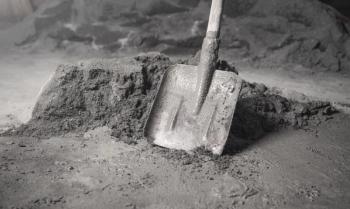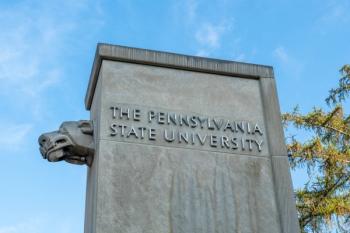
Mini-Tutorial: Cleaning Up the Spectrum Using Preprocessing Strategies for FT-IR ATR Analysis
Key Takeaways
- Data preprocessing is essential in FT-IR ATR spectroscopy to minimize noise and extract genuine molecular features, improving model accuracy.
- Common preprocessing steps include normalization, scatter correction, and baseline correction, which address spectral distortions like noise and baseline shifts.
This mini-tutorial explores how data preprocessing (DP) transforms raw FT-IR ATR spectra into meaningful, reliable inputs for chemometric modeling. Readers will learn about key DP methods: normalization, scatter correction, centering, scaling, and baseline correction, and how proper selection of these techniques improves accuracy, reproducibility, and interpretability in infrared spectroscopic analysis.
Introduction and Relevance
Fourier transform infrared (FT-IR) spectroscopy, especially in its attenuated total reflection (ATR) form, has become indispensable in forensic, biomedical, and food sciences chemical analysis for its speed, minimal sample preparation, and non-destructive sampling. However, the spectra it produces are often laden with noise, baseline shifts, and scattering effects that obscure important chemical information. As Loong Chuen Lee, Choong-Yeun Liong, and Abdul Aziz Jemain from Universiti Kebangsaan Malaysia emphasize in their review (1), neglecting proper data preprocessing can undermine even the most sophisticated chemometric models. This mini-tutorial article summarizes their findings and expands upon practical preprocessing strategies that enhance spectral quality and analytical outcomes.
Core Tutorial Content
Principles: Why Data Preprocessing Matters
The 2017 study by Lee, Liong, and Jemain (1) highlights data preprocessing (DP) as the critical yet often overlooked first step in the chemometric workflow. FT-IR ATR spectra are high-dimensional datasets containing both informative and uninformative signals. Without proper DP, modeling algorithms like principal components analysis (PCA) or partial least squares (PLS) may misinterpret irrelevant variation, such as baseline drifts or scattering, as chemical information.
Proper preprocessing minimizes systematic noise and sample-induced variability, enabling the extraction of genuine molecular features. As supported by recent FT-IR-based studies on honey authentication (2) and biomedical analysis (3), preprocessing ensures that spectral data reflect true compositional differences rather than artifacts from sample presentation or instrument drift.
How It Works in Practice
In FT-IR ATR spectroscopy, infrared light interacts with the sample’s surface through total internal reflection, generating a spectrum characteristic of its molecular composition. However, as Lee and colleagues note (1), several factors, such as sample heterogeneity, particle size, surface roughness, and instrument stability, can distort absorbance signals.
Common spectral distortions include:
- Baseline variations (offsets, slopes, or curvature)
- Spectral noise (due to scattering, sample variation, optical alignment, ATR crystal contamination, CO2, moisture, or detector instability)
- Intensity variation (caused by differing sampling presentation or pathlength)
- Spectral overlap (between analyte and background components, especially in complex mixtures).
To mitigate these issues, spectroscopists employ a combination of preprocessing steps:
- Normalization adjusts all spectra to a common intensity scale, compensating for differences in sample quantity (pathlength). Common approaches include dividing by the most intense peak or total absorbance area.
- Scatter Correction (SC) methods, such as standard normal variate (SNV) and multiplicative scatter correction (MSC), correct multiplicative scaling and background effects due to particle-size variations or light scattering.
- Centering and Scaling standardize the mean and variance of each variable (wavenumber). Mean-centering (MC) shifts the average absorbance to zero, facilitating clearer PCA interpretations; autoscaling adjusts both mean and variance, ensuring variables contribute equally to the model.
- Baseline Correction (BC) removes background drifts caused by reflection and refraction effects inherent to ATR optics. Polynomial fitting or “rubber-band” algorithms are often used.
- Derivatives (Drv), especially first and second order, further remove baseline effects and enhance spectral resolution by separating overlapping peaks.
When applied systematically, these transformations convert raw ATR spectra into stable, interpretable datasets suitable for multivariate analysis.
Application and Method Examples
Lee and co-workers (1) illustrate these preprocessing effects using forensic ink analysis, where FT-IR ATR spectra of ink on paper substrates are evaluated to detect forgery. The technique’s non-destructive nature preserves evidence integrity, but spectral interference from the paper complicates interpretation. Normalization and baseline correction dramatically improve discriminant power between ink samples, revealing subtle compositional variations otherwise hidden by background noise.
Similarly, Tsagkaris and co-workers (2) demonstrated how preprocessing impacts the classification of honey by botanical origin using FT-IR spectra. Their study compared multiple preprocessing combinations and found that specific pipelines, such as SNV followed by second-derivative transformation, optimized model accuracy.
In biomedical applications, Magalhães and co-workers (3) emphasized that preprocessing is indispensable for resolving overlapping biochemical signals in complex tissues or biofluids. Inconsistent preprocessing across studies, they noted, often leads to irreproducibility and misinterpretation of diagnostic models.
These examples explain the universality of DP challenges across different applications and fields, from forensic to food and biomedical sciences, and the necessity of empirically tailoring preprocessing strategies to specific data characteristics.
Tips and Common Pitfalls
Lee and colleagues (1) identified several knowledge gaps and common missteps in FT-IR ATR preprocessing practice:
- Overreliance on defaults: Many users adopt standard preprocessing methods (for example, autoscaling, SNV) without validating their suitability for a given dataset.
- Neglecting preprocessing entirely: Some qualitative studies skip DP under the false assumption that visual spectral interpretation is sufficient, leading to unreliable conclusions.
- Lack of evaluation tools: Few standardized metrics exist for assessing preprocessing effectiveness. Visual inspection or PCA clustering are often used, but both are subjective.
- Ignoring data dimensionality: High-dimensional spectral data require preprocessing that balances signal preservation with noise reduction, noting that excessive smoothing or application of derivative treatments (differentiation) can obscure relevant features.
To avoid these pitfalls, users should:
- Compare multiple preprocessing pipelines using model performance metrics (for example, RMSE, accuracy).
- Retain raw data for traceability.
- Apply domain knowledge, such as known absorption bands and interpretive spectroscopy knowledge, to verify that preprocessing has not distorted chemically meaningful regions.
- Document each preprocessing step for reproducibility and workflow consistency.
Conclusion and Practical Takeaways
Data preprocessing is the bridge between raw spectral acquisition and meaningful chemometric modeling. The review by Lee, Liong, and Jemain (1) serves as a crucial reminder that preprocessing is neither optional nor trivial. In FT-IR ATR spectroscopy, where subtle baseline slopes or scattering effects can mislead classification models, carefully chosen preprocessing transforms raw data into chemically interpretable features.
The best practice involves testing combinations of normalization, scatter correction, and baseline or derivative methods, evaluating each for accuracy and reproducibility. Emerging applications, from honey authentication (2) to biomedical diagnostics (3), demonstrate that the right preprocessing strategy can dramatically enhance spectral discrimination and model robustness.
Future work should focus on developing standardized evaluation metrics and automated tools to guide optimal DP selection. As the authors conclude, the field still lacks a unified “DP practice strategy.” Addressing this gap will ensure FT-IR ATR spectroscopy reaches its full potential as a reliable, high-throughput analytical tool across disciplines.
References
(1) Lee, L. C.; Liong, C. Y.; Jemain, A. A. A Contemporary Review on Data Preprocessing (DP) Practice Strategy in FT-IR ATR Spectrum. Chemom. Intell. Lab. Syst. 2017, 163, 64–75. DOI:
(2) Tsagkaris, A. S.; Bechynska, K.; Ntakoulas, D. D.; Pasias, I. N.; Weller, P.; Proestos, C.; Hajslova, J. Investigating the Impact of Spectral Data Pre-Processing to Assess Honey Botanical Origin through Fourier Transform Infrared Spectroscopy (FT-IR). J. Food Compos. Anal. 2023, 119, 105276. DOI:
(3) Magalhães, S.; Goodfellow, B. J.; Nunes, A. FT-IR Spectroscopy in Biomedical Research: How to Get the Most Out of Its Potential. Appl. Spectrosc. Rev. 2021, 56 (8–10), 869–907. DOI:
Newsletter
Get essential updates on the latest spectroscopy technologies, regulatory standards, and best practices—subscribe today to Spectroscopy.





